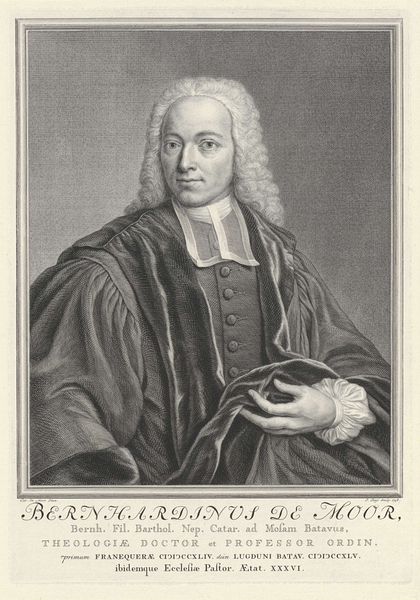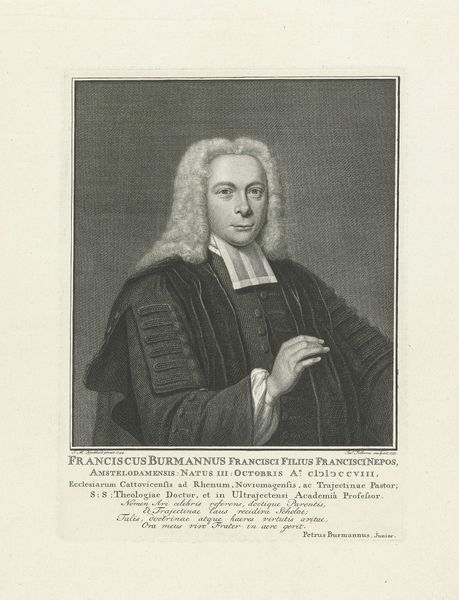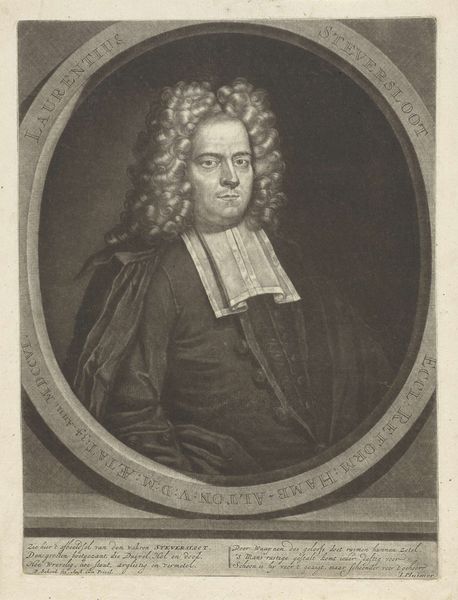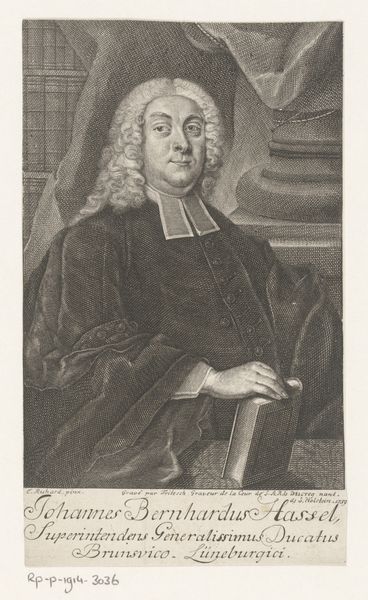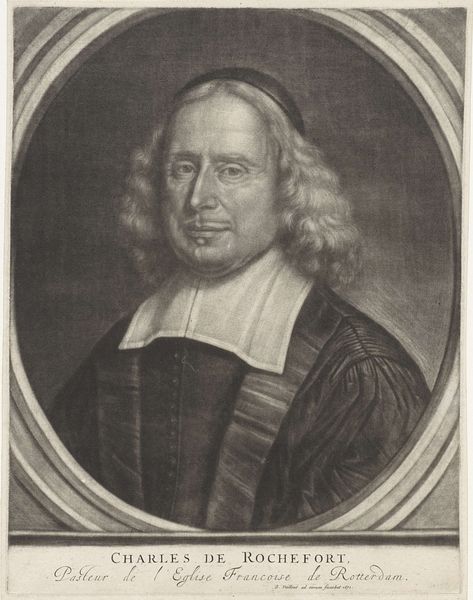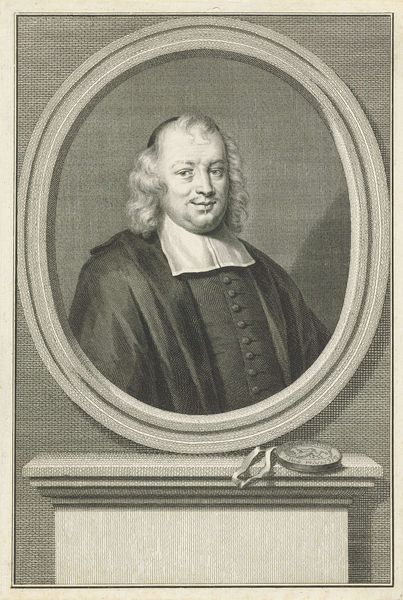
drawing, print, paper, engraving
#
portrait
#
drawing
#
baroque
# print
#
paper
#
historical photography
#
engraving
Dimensions: height 228 mm, width 166 mm
Copyright: Rijks Museum: Open Domain
Editor: We are looking at a portrait print by Jacob Folkema from 1747, entitled 'Portret van Frans Burman (II),' currently held at the Rijksmuseum. It's an engraving on paper, and the detail achieved with the lines is pretty incredible. How do you read this particular print? Curator: Let's consider this engraving as a physical object embedded within a network of production and consumption. Look at the lines, the deliberate hatching used to create tone. These aren't simply aesthetic choices, but the direct result of labour, of a craftsman painstakingly working a metal plate. Editor: That's interesting. I hadn't really considered the labour involved. Curator: And the paper itself! Where did it come from? What was the process of its making? How did that influence the final artwork? Was this paper meant for wide distribution or limited release for elite collectors? We can explore how its material existence intersects with 18th century social structures. The production of portraits like this wasn't simply about representing the sitter; it was a business, a demonstration of skill, a product within a developing print market. Editor: So you are saying, thinking about paper or lines as simply materials misses out that it's tied to all this other stuff, making the meaning deeper than it would appear? Curator: Exactly! The print exists as a material record of this history and social context, reflecting ideas, relationships of production, the engraver’s skill as commodity and more! Do you think that looking at artwork from this perspective opens up any new considerations for art history in general? Editor: It definitely makes me consider who was involved behind the scenes. Instead of just celebrating the final work of art. Now I see there is so much more to the story. Curator: Right! Seeing art as something that exists at the centre of the system gives it, perhaps surprisingly, even greater meaning!
Comments
No comments
Be the first to comment and join the conversation on the ultimate creative platform.

